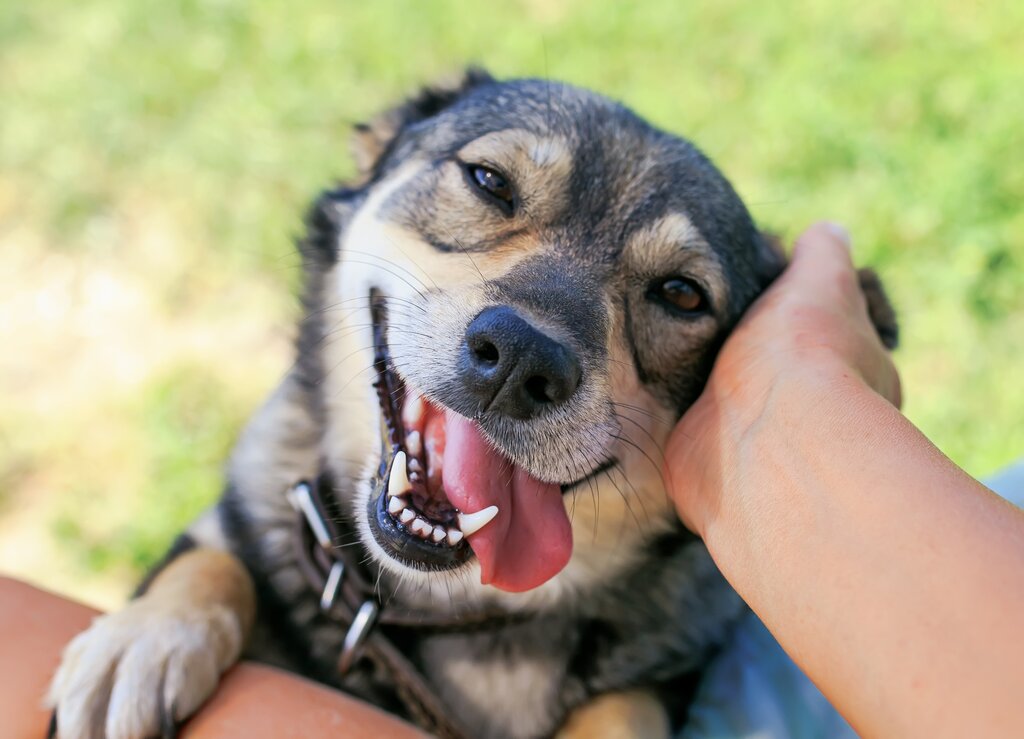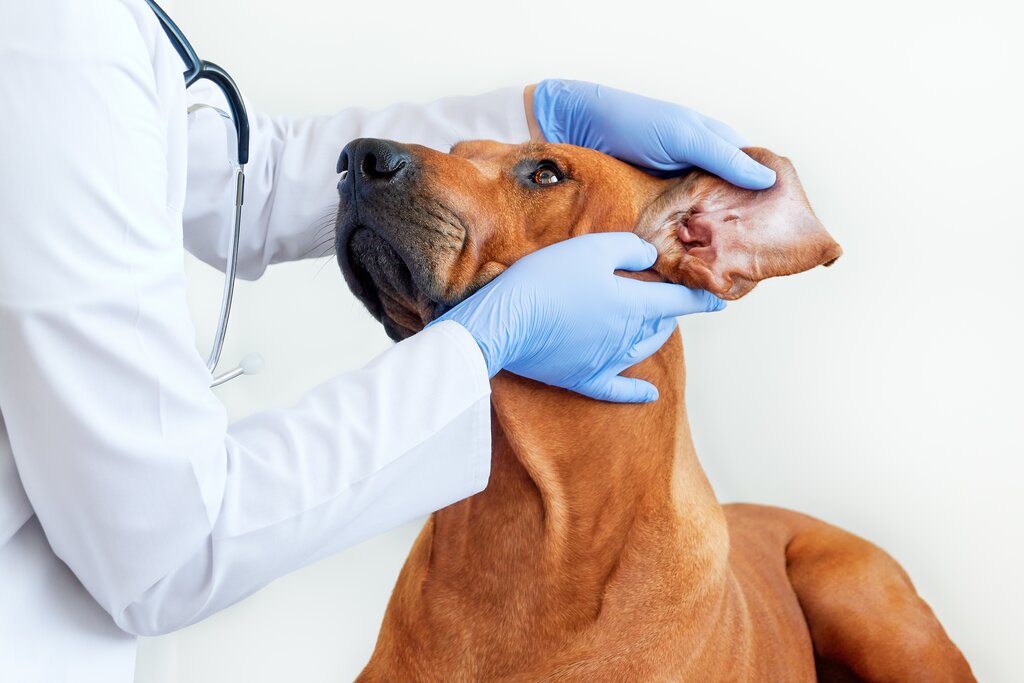Last Updated: 18/06/2025
Why is my dog getting ear infections?
What to do to solve ear infections for your dog!
Author: Dr Teagan Lever BVSc (Hons)
Reading Time: 30 minutes - long read
Ear infections, also known as otitis externa, are one of the most common reasons for dogs to visit the vet. They can be very painful, and if left untreated can cause serious disease, deafness, and damage to the inner ear. In many cases, ear infections can be extremely frustrating for owners as they frequently recur time and time again, and over time the cost of repeated vet consultations, testing, and medication can quickly add up.
The good news is that if you team up with your vet to address the underlying causes and predisposing factors involved, you can take control and break the cycle of recurrent ear infections!
Symptoms of ear infections in dogs
How do you know if your dog has an ear infection? Signs may include:
- Red skin in and around the ears
- Pain when the ears or head are touched
- Excessive scratching at the ears or shaking the head
- Tilting of the head
- Presence of an odour or discharge in or around the ear
Why does my dog keep getting ear infections?

The short answer to this question is, anything that causes inflammation of the ear canal can result in an infection. The ear canal can become inflamed due to seasonal allergies and atopy, parasites, auto-immune disorders, excessive moisture, or food allergies, and this warm, moist environment becomes the perfect breeding ground for yeast and bacteria.
The long answer? Ear infections in dogs are caused by a combination of: predisposing factors, underlying causes and opportunistic yeast and bacteria. While yeast and bacteria may be easily killed with a course of antibacterial or antifungal drops, an understanding of the predisposing factors and underlying causes present is essential to prevent the infection from recurring.
Physical and environmental factors
Some dogs are naturally predisposed to getting ear infections, due to the conformation of their ears. Narrow ear canals, excessive fur within the ear, and long floppy ears can all increase your dog's likelihood of ear infections. Breeds that are particularly prone include pugs, cocker spaniels, poodles and poodle mixes like spoodles and labradoodles, bichon frises, beagles, and retrievers.
Dogs who swim can also be prone to ear infections. If you've got a water-loving pooch, it's important to clean and dry their ears afterwards with an ear cleaner.
Skin allergies
Dogs with skin issues are also more likely to suffer from ear infections.
Why do ear infections and itchy skin go hand in hand? It's no coincidence that ear infections and skin allergies often flare up at the same time. This is because the inside of the ear is really just an extension of the skin. Therefore, anything that irritates the skin will also irritate the skin within the ear canal, which leads to inflammation, heat, and moisture - in other words, the perfect environment for bacteria and yeast to set up camp!
Looking for more information on skin allergies? Read our article Why Does My Dog Have Sensitive, Itchy Skin?
Yeast and bacteria overgrow
There are many different types of microbes that can cause ear infections. All of the common microbes are generally considered 'commensal organisms', which means they are usually found in small amounts on healthy skin. But when conditions are favourable, such as in moist, hot, inflamed skin, they can overgrow and cause infection.
Bugs that can 'set up camp' in your dog's ear and cause infection include:
Yeast
Malassezia pachydermatis - a commensal species of yeast which lives normally on the skin in small amounts. Malassezia often causes a black ear discharge with a characteristic musty smell and can also play a part in some chronic skin infections. Read more in Yeast Infections in Dogs
Bacteria
Staphylococcus intermedius - a gram-positive cocci (sphere shaped bacteria) which typically causes a more watery, lighter-coloured discharge in the ear. It is also the primary cause of many skin infections.
Pseudomonas aeruginosa - a gram-negative rod-shaped bacteria. This is often present in severe, pus-filled ear infections with yellow or green discharge.
Other less common bacteria, including Streptococcus species, Proteus mirabilis, E. coli and Staphylococcus aureus. These are usually seen in conjunction with one of the other common microbes.
What about ear mites? Many people assume that itchy ears in their pet must be caused by ear mites, but the truth is, ear mites are not as common as ear infections. Ear mite infestations are mostly seen in young puppies or kittens, and sometimes in immunocompromised or elderly pets.
Treatment of ear infections in dogs

Step 1 - Treat the Infection and Inflammation
The first step is to clear up the current infection. This will usually require 10-14 days of medicated ear drops, prescribed by your vet. Your pet may also be given an anti-inflammatory drug or corticosteroids for some much-needed relief.
A general non-medicated ear cleaner may also be recommended by your vet, to help clear any debris prior to putting the medicated drops in the ear. This non-medicated general ear cleaner can also be used after the infection has cleared, for ongoing ear maintenance. Long term, it is a good idea to clean your dog's ears once per week, and after every time your dog goes swimming or has a bath.
Vet Recommended Ear Cleaning Products
A diagnosis is important to ensure the best treatment
One of the reasons why you should never skip the vet appointment and try to treat at home is because a diagnosis of the type of yeast or bacteria present is needed to choose the right medication. Different pathogens often require different medication which it's no good just buying an ear medication online and hoping for the best.
Your vet will be able to take a swab from deep inside the ear canal and take a look at the cells under a microscope. Usually, they will be able to diagnose the type of microbe in just a few minutes (no need to 'wait for a pathologist' - vets are multi-talented!). However, there may be some instances where your vet prefers to send off a sample for specialist testing, such as when resistance or an unusual pathogen is suspected.
A full examination of the ear canal with an otoscope will also be performed. This will help rule out issues such as ear mites, tumours, or grass seeds. It will also allow your vet to assess whether the ear drum membrane is intact. Many chronic infections can lead to an irritated and fragile membrane which can burst, exposing the structures of the inner ear. It's extra important for your vet to visualise the state of the ear drum, because some ear medication can be toxic if the membrane is not intact. This is another reason why you shouldn't just treat at home without a vet examination!
Many people ask 'how can I treat my dog's ear infection at home, without going to the vet?' With the expense of repeated vet visits and treatments, it can be tempting to search for a home remedy alternative to try and save a little cash. Unfortunately the reality is without an appropriately chosen antibacterial or antifungal medication, home remedies such as coconut oil or vinegar are unlikely to work and could actually end up making things worse.
Step 2 - Identify and address underlying causes to prevent recurrence
Once the infection has cleared, underlying causes such as allergies need to be addressed. If the underlying cause isn't treated, the ear infection will probably return.
The gold standard for investigating allergies is to have a intradermal skin and/or blood testing in consultation with a veterinary dermatologist. However, you can rule out some conditions such as food allergies with an hypoallergenic diet trial.
Want to know more? Find out more about skin allergies in dogs, food allergies and the best hypoallergenic dog foods.
Step 3 - Improve the skin barrier, improve the ears
Even if you aren't sure what your pet is allergic to, or what the underlying cause of their ear infection is, improving the skin barrier can help reduce flare ups of itchy skin as well as ear infections. A stronger skin barrier means that fewer allergen proteins can penetrate the surface of the skin and cause a reaction, it also promotes a quicker healing and repair time.
One of the most effective and natural ways to strengthen the skin barrier is to increase the omega 3 and 6 fatty acids, particularly from marine sources, in the diet. You could swap your pooch over to a skin care diet or a fish-based dog food, or alternatively you can add extra omega fatty acids directly to your pet's usual food with a skin support supplement.
As well as increasing the omega fatty acids in your dog's diet, regular use of hypoallergenic shampoos and moisturising conditioners such as Aloveen Oatmeal can also be helpful to soothe the skin and provide a physical barrier against allergens and help nourish the skin cells so they are stronger.
Help support your dog's ear health
In most cases, ear infections can be avoided by identifying and addressing any underlying causes and predisposing factors. Working with your veterinarian to keep your dog's allergies under control can make a big difference. Try to get into the habit of cleaning your dog's ears regularly, especially after bathing or swimming.
By taking some time to address the underlying causes, you can help to prevent ear infections from recurring and keep everyone happy!
Further Reading
Want to read more? Check out our other articles:
How to Stop Your Dog Scratching Once and For All
Yeast Infections and Allergies in Dogs
History
Our experts continually monitor the health and wellness space and we update our articles when new information becomes available.
Jan 2024
Edited by Dr Teagan Lever BVSc (Hons)Dr Teagan Lever BVSc (Hons)
Head Veterinarian, BVSc (Hons)
Pet Circle's Head Veterinarian, Dr Teagan graduated from the University of Queensland in 2010 and went on to work in small animal and mixed practice in various locations around QLD & ACT before joining Pet Circle in early 2016. Dr Teagan has special interests in dermatology, nutrition and preventative health care. She feels privileged to witness the special bond people share with their pets on a daily basis and enjoys forming lasting relationships with pet parents and their fur children.

